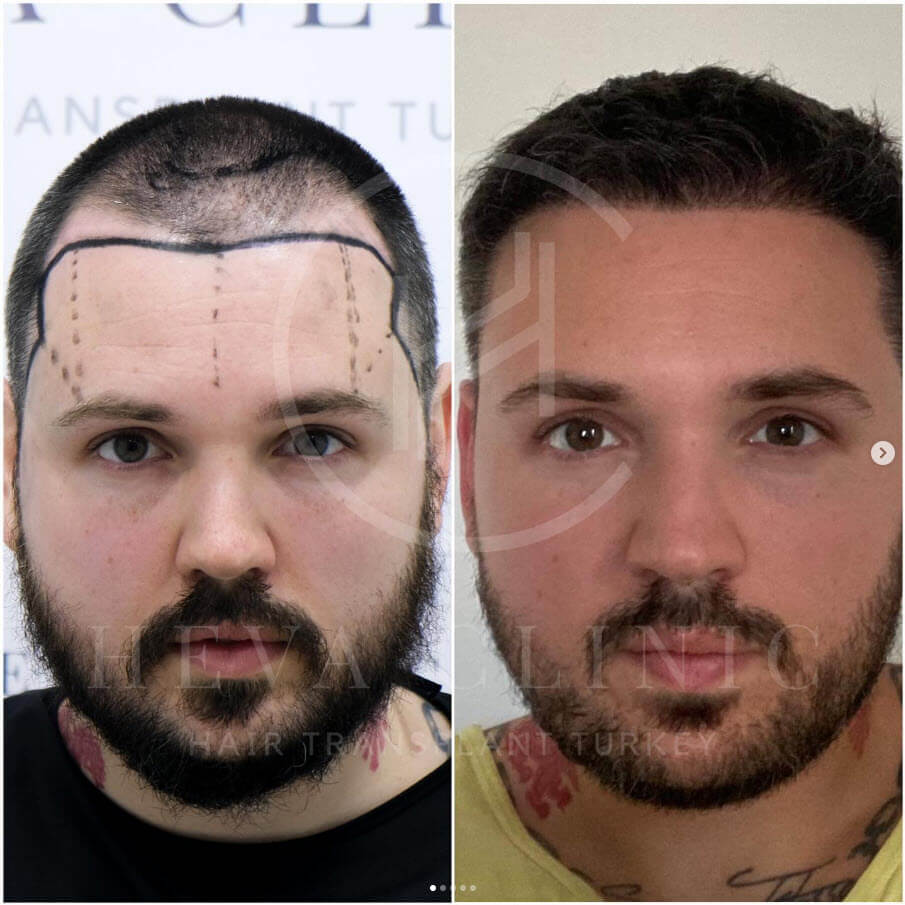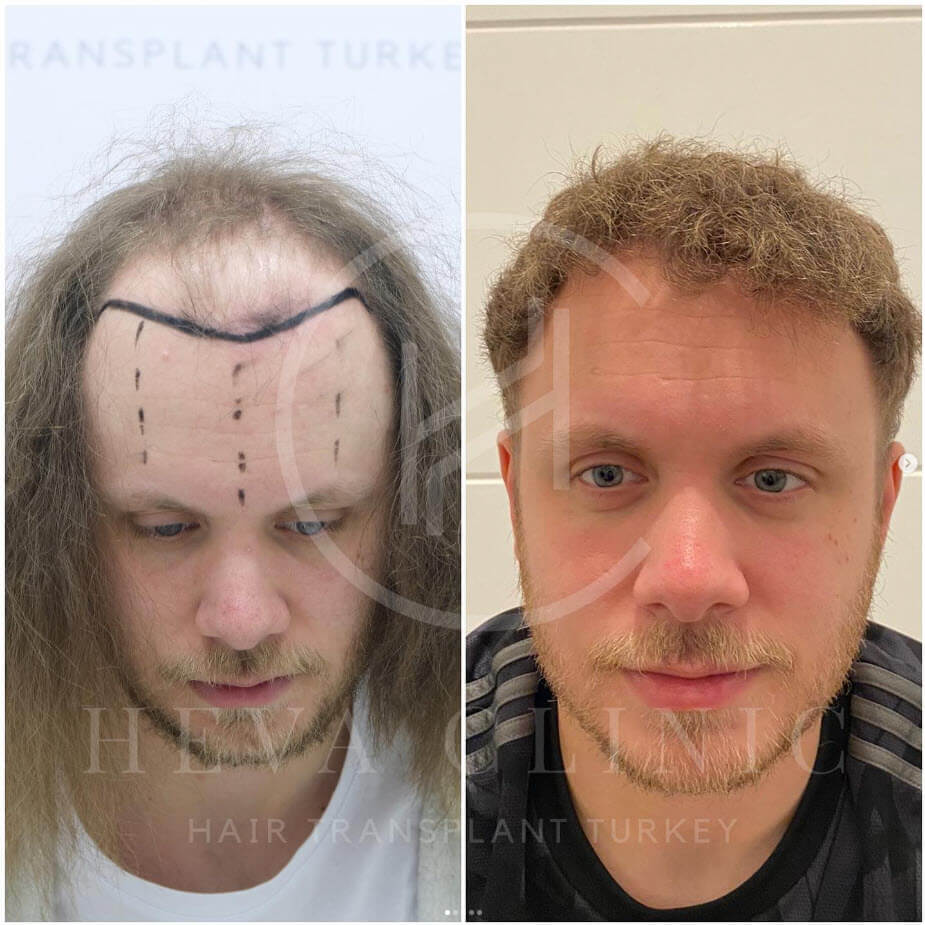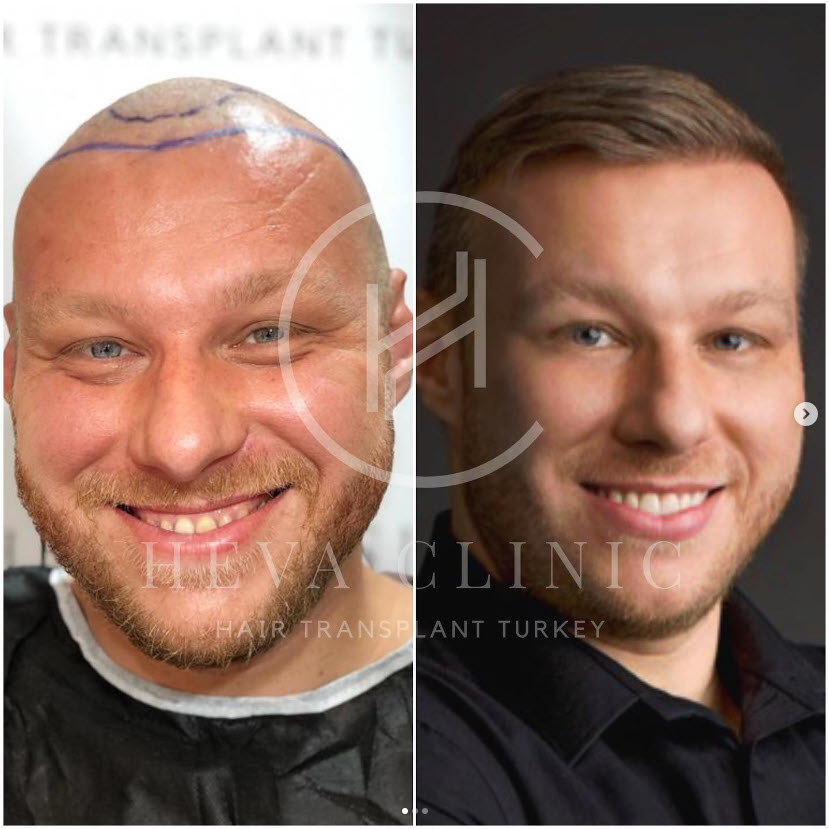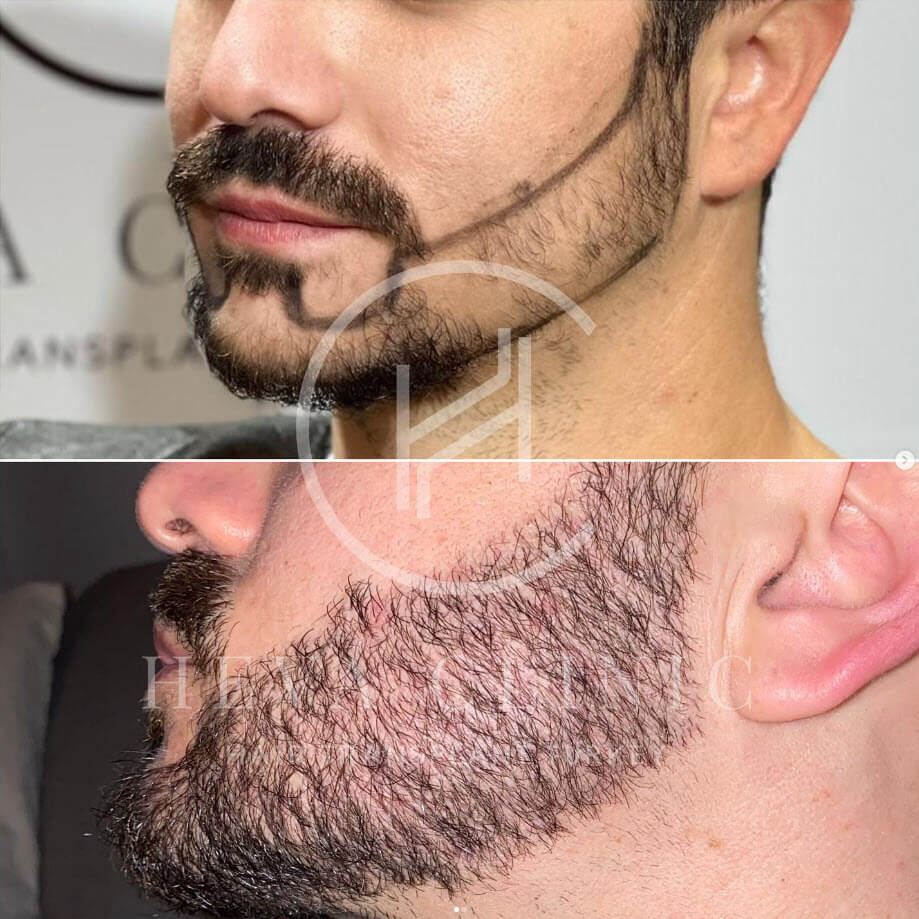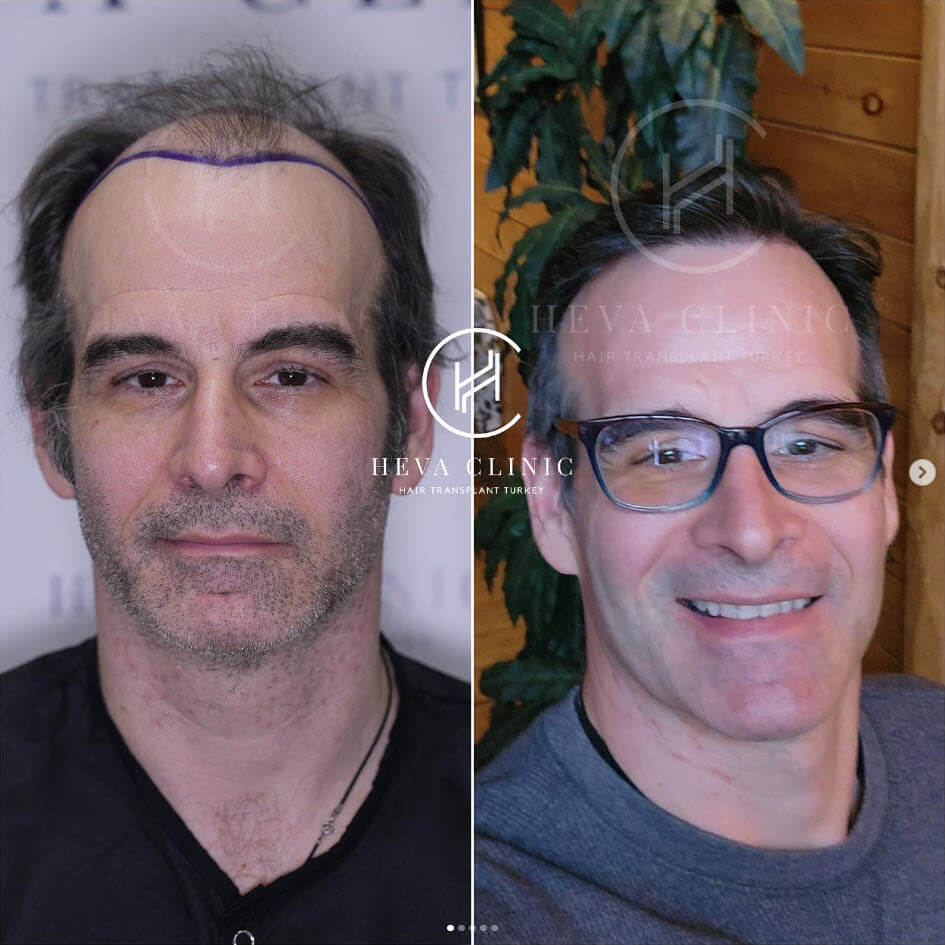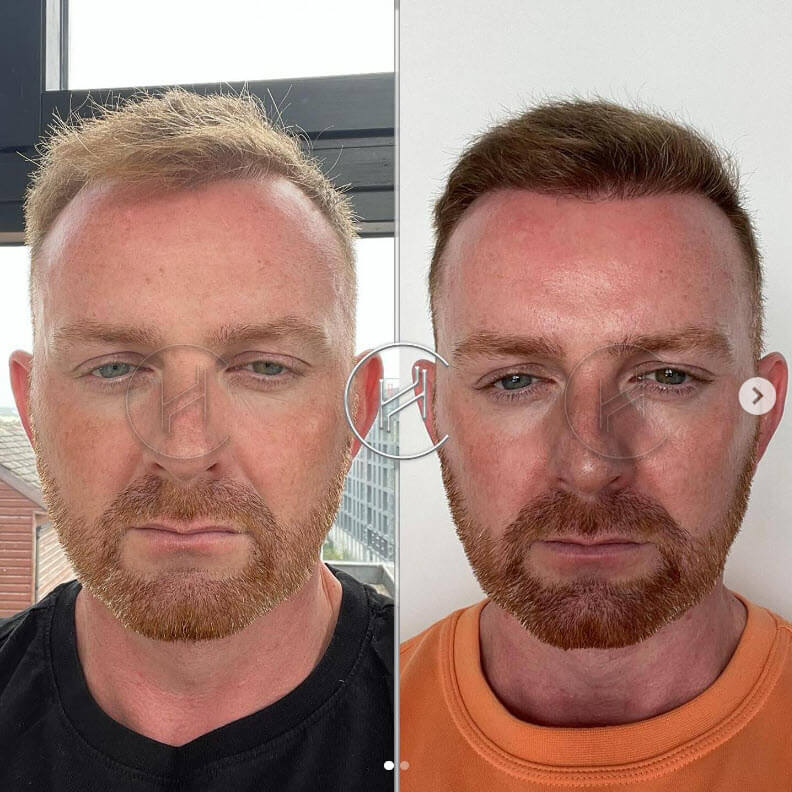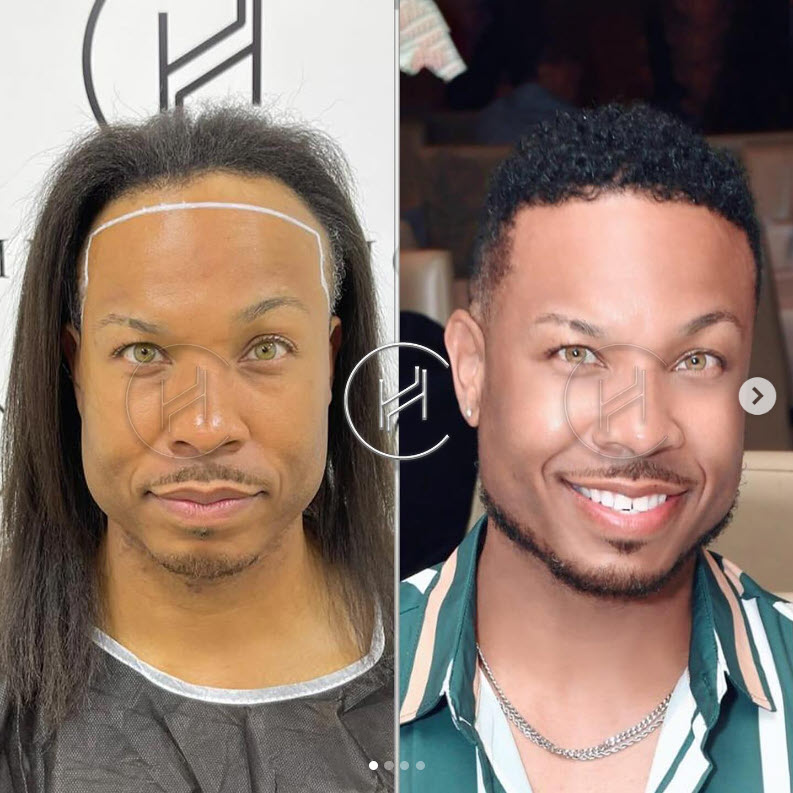The hair care routine followed after a hair transplant can influence the results of the procedure. Hence, it is important to be aware of how to take good care of your hair, especially the transplanted and donor areas, in order to support healing and improve the results.
This brings us to a pertinent question about how to sleep after a hair transplant so that there is no damage to the donor or recipient sites. This article will guide you in making decisions about how to sleep and the best position to sleep after a hair transplant so that you can achieve the best results.
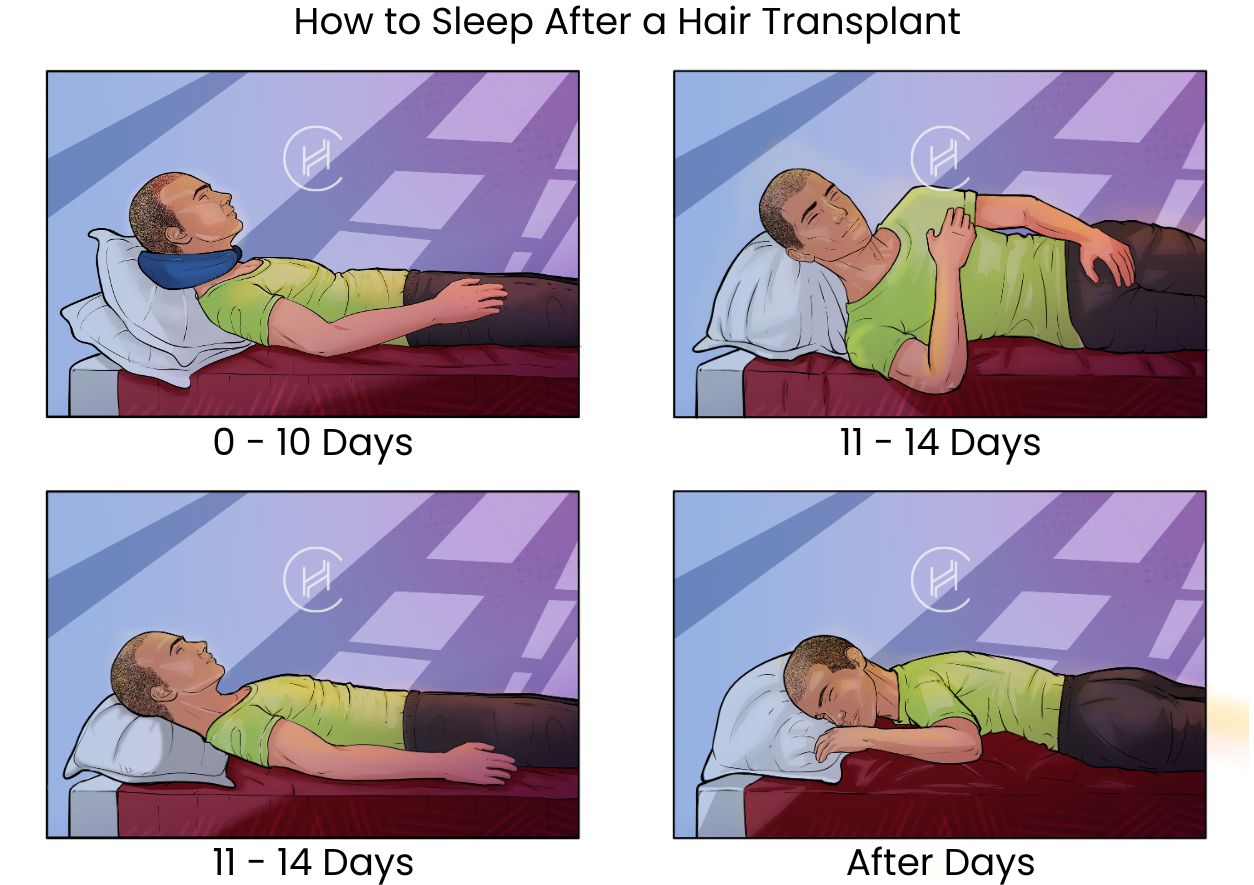
Guide to sleeping after a hair transplant
The transplanted hair follicles are delicate and vulnerable to falling off for a few days following the hair transplant, and it’s strongly advised to follow certain precautions regarding your sleep position and sleep hygiene to avoid damaging your hair transplant while lying down.
Here is a breakdown of how to sleep after a hair transplant:
How to sleep for the first 10 days after a hair transplant?
From day 1 to day 10, you need to take maximum precautions while sleeping as the transplanted grafts are the most vulnerable to falling off.
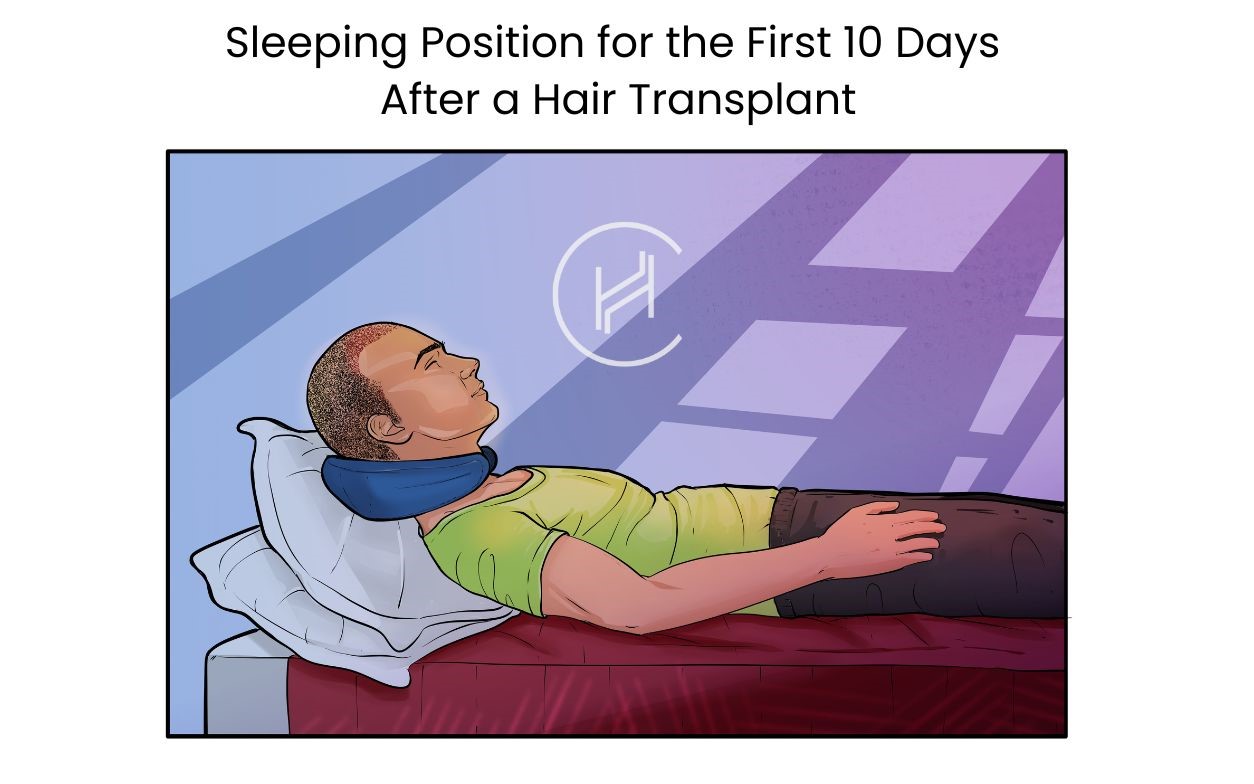
Instructions to follow during the first 10 days:
Rest your head on 1 pillow, keeping a neck pillow around your neck, to ensure you don’t roll over in bed, damaging the grafts.
You can keep your head slightly elevated at around a 45-degree angle. The elevated position will reduce the reflux of the blood to the scalp area and help reduce swelling and bruising. [1]
Here are some additional tips to follow while sleeping:
How to sleep between 11-14 days after a hair transplant?
During this period, you can keep sleeping on your back as well as on your sides.
However, you must still avoid touching the head to the pillow to ensure there is no pressure on the areas operated on.
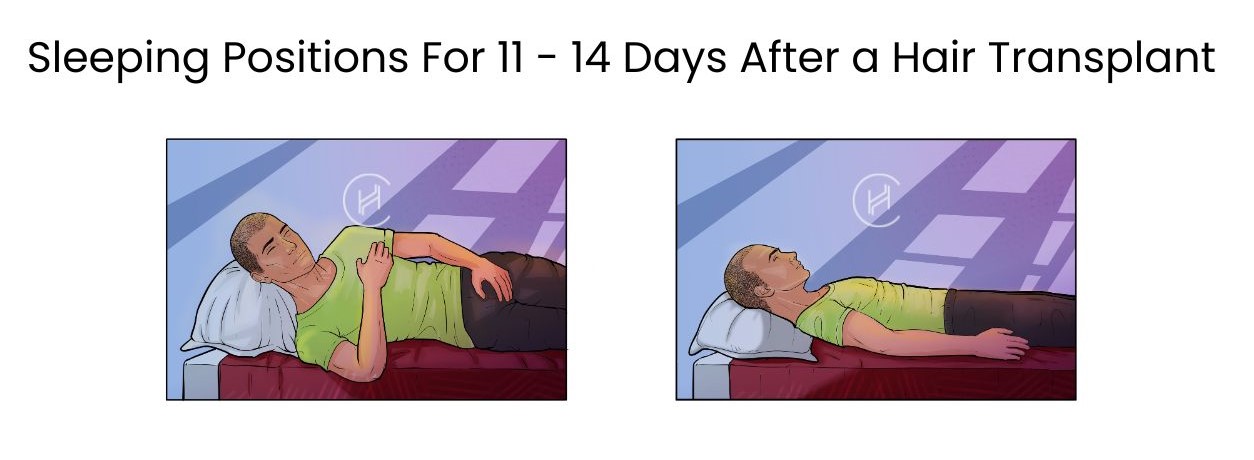
Also, make sure you get rid of the scabs 10 days after your procedure. Watch how to safely remove the scabs.
How to sleep 14 days after a hair transplant?
You can sleep normally after 14 days of a hair transplant.
You may sleep on your stomach, sides, and back and do not need to use a neck pillow,, provided the donor and recipient sites have fully healed, and the grafts appear to be rooted.

Also, make sure you get rid of the scabs 10 days after your procedure. Watch how to safely remove the scabs.
When can I sleep normally after a hair transplant?
The transplanted hair grafts get enrooted into the recipient area, and the donor and recipient areas are likely to have healed sufficiently after about 10 to 14 days of a hair transplant. So, just to be safe, you will be able to sleep normally after about two weeks of a hair transplant.
However, until this happens, it is important to take proper precautions while sleeping to protect the donor and recipient areas.
When can I sleep without a neck pillow after transplant?
Your hair transplant expert might advise you to use a neck pillow right after a hair transplant to avoid the direct touch of the donor or recipient areas at the back and sides of the scalp to your regular pillow. A neck pillow can be worn at night while sleeping or during the daytime while traveling or working to protect the hair grafts while turning your head.
It is generally advisable to use a neck pillow for at least 10 days after a hair transplant, after which you can sleep without it.
Can you sleep on the recipient area after a hair transplant?
Usually, patients are advised against sleeping on the hair recipient area after a hair transplant to ensure the healing of the scalp can occur comfortably.
So you should ensure that the recipient area is away from the pillow and that there is no direct contact between the pillowcase and your transplanted hair.
What is the best position to sleep after a hair transplant?
The best position to sleep after a hair transplant is on your back. As it ca be seen in the example below, you can keep your head elevated above the level of your heart. This position prevents the head from turning and damaging the transplanted grafts at night. [2]
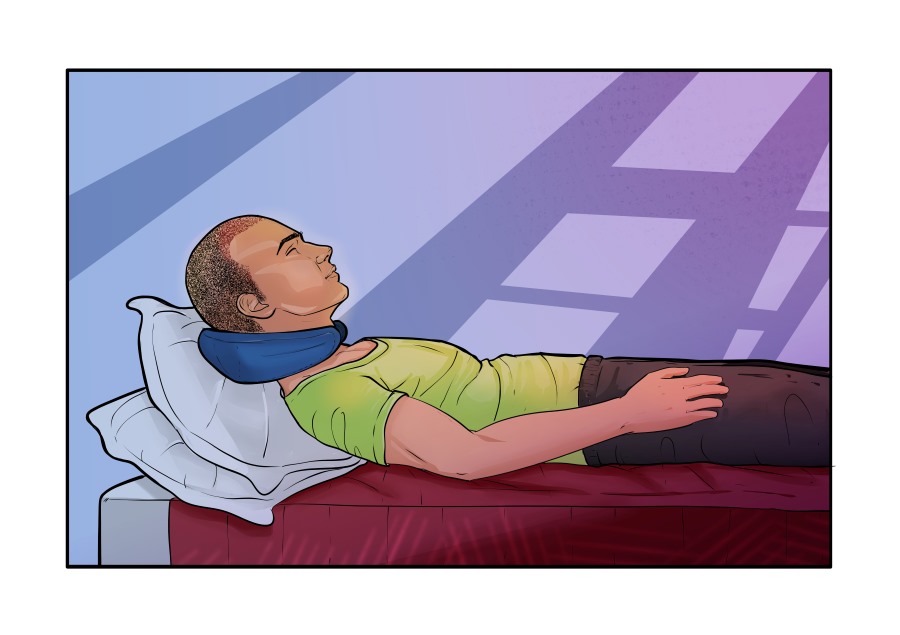
To achieve this position, you can wrap a neck pillow around your neck and then, rest your head on one pillow. This will help prop your head up and forward. Sleeping in this position will lower the risk of damage to your hair and reduce inflammation of the scalp. It can also help reduce the chances of direct contact between the recipient area and the pillow.
Once the hair grafts have become secure and the scalp has healed, which is expected to happen after around 10 to 14 days, you can sleep in any position without posing a risk to your hair transplant results.
FAQs
No, you must avoid laying your head on the back for at least 2 weeks after a hair transplant to avoid harsh contact between the pillow and the recipient area.
The newly transplanted hair grafts are the most delicate for the initial 14 days after a hair transplant. They may fall out if they are touched repeatedly or if the area experiences any friction.
This is why you should wait at least 2 weeks before touching your head following a hair transplant to allow enough time for the grafts to build sufficient strength. This will also help you avoid the risk of infection associated with the transfer of bacteria and other germs from your hands to the donor or recipient areas.
Sleeping properly in the right position does not directly affect the hair transplant results.
However, not following the right way of sleeping might result in damage to the transplanted hair follicles, due to which you may not see the desired results after this procedure. Not seeing properly may also put you at risk of rejection or falling out of hair grafts and infections.
After the standard recovery timeline, the results of a hair transplant typically become noticeable within a few weeks and continue to improve for about 10 to 12 months.
In most patients, results persist for longer than 20 years, provided the procedure is performed by a skilled and experienced hair transplant surgeon. [3]
Being aware of the right way to sleep and the various dos and don’ts to follow while lying down is also important to ensure proper healing of the scalp after a hair transplant. This can help you see the desired results within a few months.
References:
- https://www.ncbi.nlm.nih.gov/pmc/articles/PMC2956963/
- https://www.ncbi.nlm.nih.gov/pmc/articles/PMC6967160/
- https://www.ncbi.nlm.nih.gov/pmc/articles/PMC3764754/

